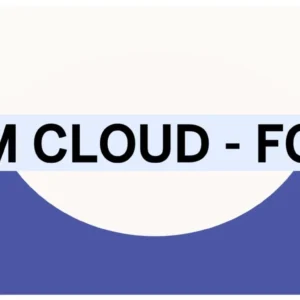This training program is designed to prepare the students for Oracle Data Integration Developer track. This training program teaches student how to use Oracle Data Integrator (ODI) to implement high-performance movement and transformation of data among various platforms. It also deals with usage of ODI graphical user interfaces that enable user to access different ODI components and resources that form ODI infrastructure. Using the graphical interfaces, you create and manage ODI repositories, which store configuration information about the IT infrastructure, the metadata for all applications, projects, models and other ODI artifacts. You also learn how to create the ODI Topology, organize ODI models and design ODI interfaces, procedures, packages and other objects.
Mode of Training
LIVE ONLINE TRAINING
Curriculum
Oracle Data Integration 12c Training
Course Overview:
Class: 1 Introduction to ODI
Identifying the Course Units
Why Oracle Data Integrator?
Overview of ODI Architecture
Overview of ODI Components
About Graphical Modules
Types of ODI Agents
Overview of Oracle Data Integrator Repositories
Class: 2 Installation of ODI 12c
Identifying the required software’s.
Prerequisites
System Requirements
Installation of ODI
Repository Configuration using RCU
Setting the sample database for hands-on
Class: 3 Introduction to ODI Repository and Agents
Administrating the ODI Repositories
Connecting to the Master Repository
Connecting to the Work Repository
Managing ODI Agents
Creating a Physical Agent
Class: 4 ODI 12c Features
The Benefits of Using ODI 12c
Overview of ODI 12g Architecture and Components
The features of New ODI 12c User Interface and its Components
Overview of ODI 12g New Features
Class: 5 ODI Topology Navigator
Creating Physical Architecture
Creating a Data Server
Testing a Data Server Connection
Creating a Physical Schema
Creating Logical Architecture
Overview of Logical Architecture and Context Views
Linking the Logical and Physical Architecture
Class: 6 ODI Models and datastores
What is a Model?
Understanding Metadata in ODI
Understanding Reverse Engineering
Creating Models
Organizing Models
Creating Data stores
Configuring Constraints in ODI
Creating Keys and References
Class: 7 ODI 12c Mapping
What is a Mapping?
Designing a Mapping
Business Rules for Mapping
What is a Mapping, a Filter, a Join?
Overview of Integration Process
What is a Staging Area?
Execution Location
Mapping with Knowledge Modules (KM)
Creating an Intermediate Mapping
Class: 8 ODI 12c MappingMonitoring and Debugging
Monitoring Mappings
Creating Objects with Operator
Viewing Sessions and Tasks
How to Monitor Execution of a Mapping
How to Troubleshoot a Session
Keys to Reviewing the Generated Code
Working with Errors
Tips for Preventing Errors
Class: 9 Designing Mappings: 1
Mapping with Business Rules
Overview of Business Rule Elements
Creating and Tracking Variables
Creating User Functions
Mapping Substitution Methods
Showing Variable Values in Log
Customizing Reverse Engineering Using RKM
Class: 10 Designing Mappings: 2
Using Partitioning in a Mapping
Reusable Mappings
Derived Select (Subselect) for Reusable Mappings
Using User Functions
Creating a User Function
Using Substitution Methods
Class: 11 ODI Procedures
What is a Procedure?
Examples of Procedures
Creating Procedures
Adding Commands
Adding Options
Running a Procedure
Viewing Results with Operator
Class: 12 ODI Packages
What is a Package?
Creating a Package
Executing a Package
Creating Advanced Packages
Error Handling
Controlling an Execution Path
Creating a Loop
Class: 13 ODI Scenarios and versions
What is a Scenario?
Managing Scenarios with Load Plans
Preparing Scenarios for Deployment
Automating Scenario Management
Scheduling the ODI Scenario
Overview of ODI version management
Handling concurrent changes
Class: 14 Enforcing Data Quality
Why Data Quality?
When to Enforce Data Quality?
Data Quality in Source Applications
Data Quality Control in the Integration Process
Data Quality in the Target Applications
Enforcing Data Quality
Exploring Your Data
Auditing Data Quality
Class: 15 ODI Changed Data Capture
Techniques of Changed Data Capture
Changed Data Capture in ODI
CDC Strategies and Infrastructure
CDC Consistency
Creating Change Data Capture (CDC)
Viewing Data/Changed data
Journalizing
Class: 16 Load Plans
What Are Load Plans?
Load Plan Editor
Load Plan Steps
Defining the Restart Behavior
Benefits of Using Load Plans
Handling Failed Load Plans
Class: 17 ODI Security Navigator
Security Concepts: Overview,
Defining Security Policies
Creating Profiles, Creating Users,
Assigning a Profile to a User,
Assigning an Authorization by Profile or User
Defining Password Policies,
Generating Topology Reports
Class: 18 Step-by-Step Debugger
Benefits of Using Step-by Step Debugger
Overview of the Features of Step-by-Step Debugger
Debugging Mappings using the Debugger
Debugging Packages using the Debugger
Class: 19 Developing ODI Knowledge Modules
Overview of Different Types of KMs
Guidelines for KM Developers
Working with Substitution Methods
Applying Various ODI Tags
Implementing Java in KMs
Troubleshooting and Debugging KMs
Class: 20 Using Groovy in ODI
Interacting Programmatically with ODI
Overview of ODI SDK
Introduction to Groovy
Using Groovy Editor
Automating Development Tasks with Groovy
Benefits of Certificate
Skill Development: Certificates often require participants to acquire and demonstrate specific skills and knowledge. This can lead to improved competence and expertise in a particular area.
Career Advancement: Many certificates are directly related to specific careers or industries. Earning a relevant certificate can enhance your qualifications and make you a more attractive candidate for job opportunities or promotions.
Professional Recognition: Certain certificates are widely recognized and respected in specific fields. Earning such certificates can enhance your professional credibility and reputation.
Specialization: Certificates allow individuals to specialize in a particular area or aspect of a field, enabling them to focus on their areas of interest or expertise.




